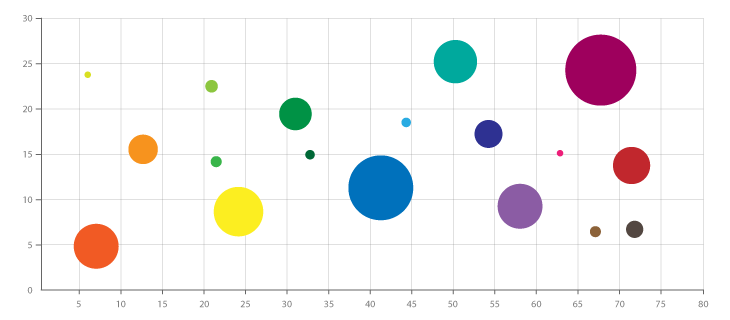Bubble charts is a type of chart that shows three dimensions of data. The size of the bubble represents the third dimension. Bubble charts are often used to show how different groups of people are doing in different areas. Keep reading to learn the answers to questions like “why is a bubble chart used?” and how to create one for yourself.
What is a bubble chart?
As stated, a bubble chart is a graphical representation of data in which the data points are represented by bubbles. The size of the bubble is proportional to the value of the data point. The bubble chart is a variation of the pie chart. Bubble charts are often used to compare values among different data sets. They can be used to show how much a particular value contributes to the whole, or to show the distribution of values within a data set.
There are many different types of bubble charts, but the most common one is the two-dimensional bubble chart, which displays data on the x-axis and y-axis. The data points are plotted on a grid, and the size of the bubble is determined by the value of the data point.
You can use a bubble chart to compare the sales of different products in a store, for instance. The x-axis could be the product, and the y-axis could be the sales amount. You can also use bubble charts to compare the sales of the same product in different stores. The x-axis would be the store, and the y-axis would be the sales amount.
also visit: forbesin
How do you create a bubble chart?
There are many ways to create bubble charts, and the best way to create a bubble chart will depend on the data you have and the type of bubble chart you want to create. In general, there are a few steps you can take to create a bubble chart in a program like Excel:
- Choose the data you want to include in your bubble chart.
- Convert the data to a format that can be used to create a bubble chart.
- Create your bubble chart.
- Format your bubble chart.
- Add labels and other details to your bubble chart.
- Publish your bubble chart.
How do you interpret a bubble chart?
When looking at a bubble chart, it is important to consider the size of the bubbles in relation to one another. Generally, the bigger the bubble, the more important the data point. Additionally, you can analyze the color of the bubbles to gain further insights. For example, if most of the bubbles are blue, that could indicate that the data is related to the stock market.
It is also important to look at the data that is represented on the bubble chart. The chart may show information like GDP, unemployment rate, or inflation. By analyzing this data, you can start to understand what is happening in the economy. For example, if the bubble chart shows that the GDP is decreasing, that could suggest that the economy is getting worse. Bubble charts are also great for highlighting outliers. For example, you can see which company has the highest revenue compared to all the other companies or which country has the highest GDP compared to all the other countries.
Bubble charts can be a helpful way to visualize data, but it is important to remember that they are not always accurate. For example, it can be difficult to compare data points if they are not all in the same units.
Overall, bubble charts can be a helpful tool for understanding what is happening in the economy. However, it is important to be aware of the limitations of the data and to always interpret the information with caution.
